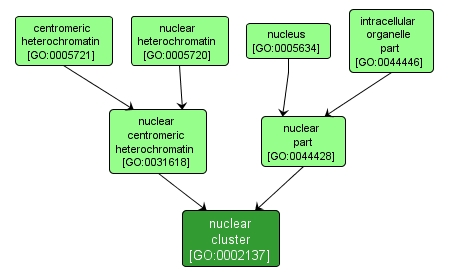GO TERM SUMMARY
|
| Name: |
nuclear cluster |
| Acc: |
GO:0002137 |
| Aspect: |
Cellular Component |
| Desc: |
Discrete hetero-chromatin-containing foci in interphase nuclei, which comprise clusters of centromeric DNA (as defined by gamma-satellite sequences and the abundance of heterochromatin protein 1 (HP-1) . |
|

|
INTERACTIVE GO GRAPH
|














